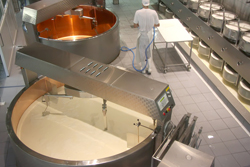Fresh, safe, ready-to-eat food of the future
Processing food is a complex matter. More conventional means of preserving almost invariably brings about tell-tale signs that the food is processed and not fresh. Methods based on heating bring about chemical-physical and nutritional changes. A classic example is pasteurisation. In milk this process destroys phosphatase affecting calcium absorption, forms beta-lactose from lactose and kills 'good' bacteria. The 'Innovative non-thermal processing technologies to improve the quality and safety of ready-to-eat (RTE) meals' (HIGHQ RTE) project aimed to improve both the safety and quality of RTE meals. Their research centred mainly on two categories of food very important to today's health-conscious public – fruit and vegetables and liquid foods like milk. HIGHQ RTE scientists compared the levels of naturally occurring pathogenic and inoculated probiotic microbes in vegetable food given photosensitisation treatment. For milk products, the performance of pulsed electric fields technologies and high pressure homogenisation (HPH) was assessed. Models of the death kinetics of the microbial populations in the food and during storage were developed as a basis for quantitative risk assessment procedures. In line with consumer demand for probiotic foods, one of the aims of the project was to evaluate the potential of HPH to inactivate pathogenic species like Listeria while preserving and promoting the viability of probiotic bacteria in milk. Data from the HPH treatment makes for promising reading. Two highly pathogenic species of milk bacteria, Salmonella and Listeria, were sensitive to the levels of heat and pressure applied in the trials. Moreover, the HPH treatment increased the performance of the probiotic component of the milk that was co-inoculated and extended the product shelf life. An added bonus is that HPH is energy saving. Conferences, papers in scientific journals and a pamphlet have disseminated HIGHQ RTE results and consumer opinion will be sought using a questionnaire. Technologies that produce safe, natural probiotic food are important to the food industry, healthcare authorities and the public who are increasingly aware of the link between diet and health.

